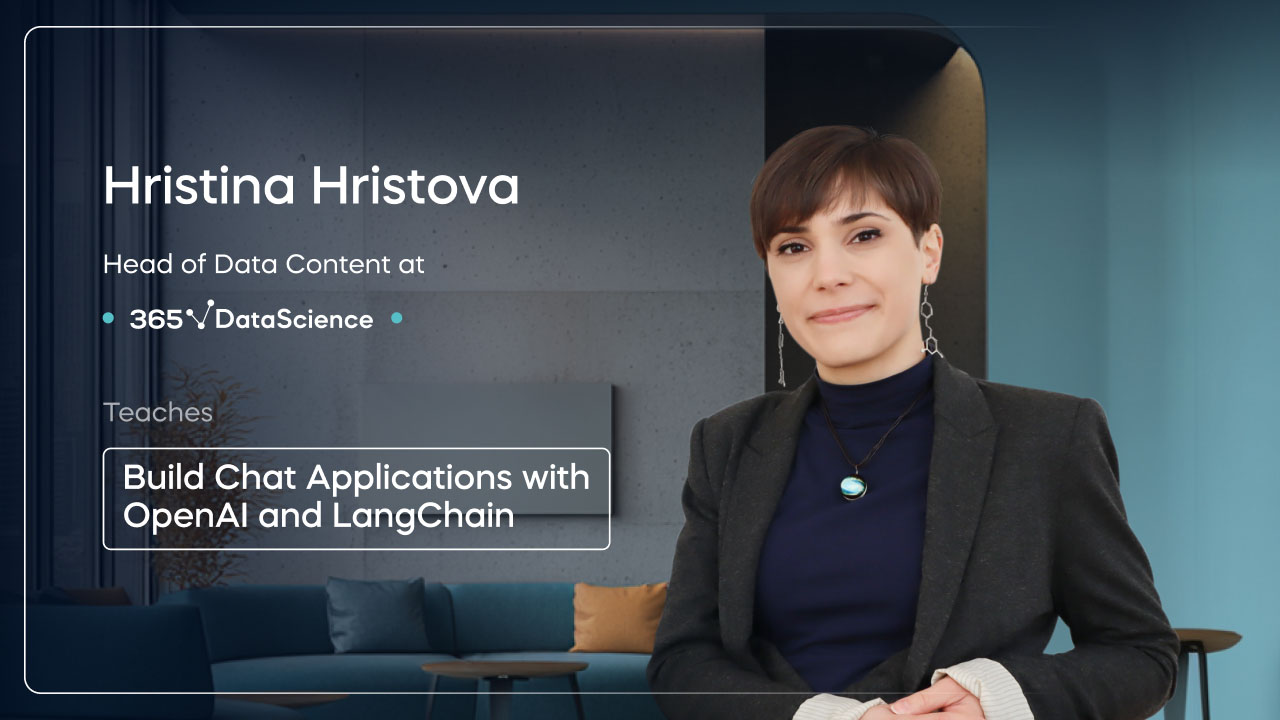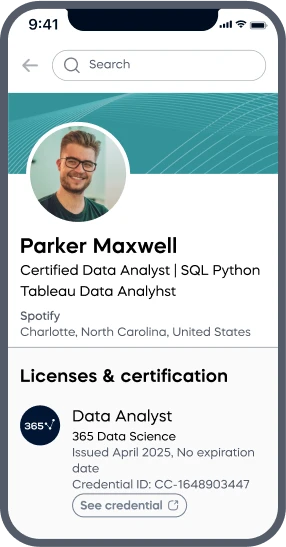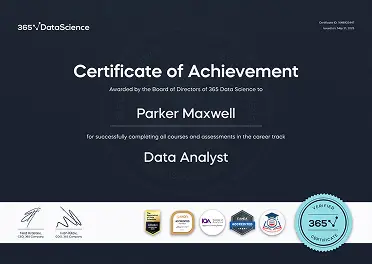Mohamed Sherif E.
See all reviews
Gain cutting-edge AI skills: Master the LangChain framework to build and deploy real-world AI applications






Skill level:
Duration:
CPE credits:
Accredited

Bringing real-world expertise from leading global companies
Master's degree, Theoretical and Mathematical Physics
Description
Curriculum
Free lessons

1.1 Introduction to the Course
5 min

1.2 Business Applications of LangChain
5 min

1.3 What Makes LangChain Powerful?
5 min

1.4 What Does the Course Cover?
6 min

2.1 Tokens
6 min

2.2 Models and Prices
3 min
9 in 10
people walk away career-ready
9 in 10
of our graduates landed a new AI & data job
#1 most reviewed
ACCREDITED certificates
Craft a resume and LinkedIn profile you’re proud of—featuring certificates recognized by leading global
institutions.
Earn CPE-accredited credentials that showcase your dedication, growth, and essential skills—the qualities
employers value most.





Certificates are included with the Self-study learning plan.


How it WORKS